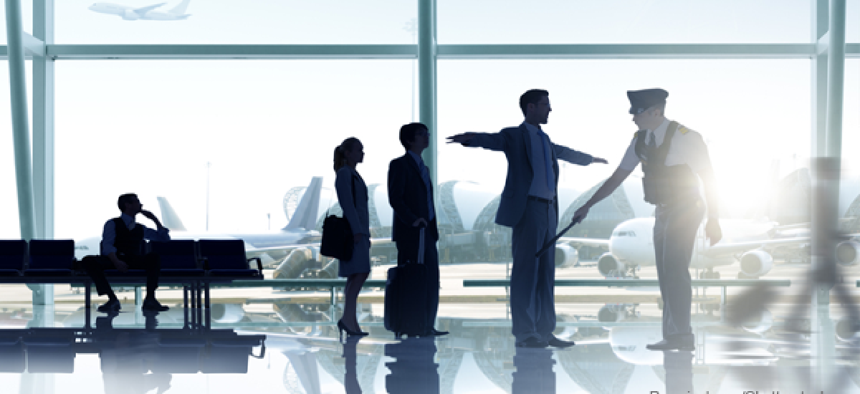Tech to speed airport scans


Connecting state and local government leaders
Transportation Security Administration is looking for more ways to get travelers through airport checkpoints more efficiently without compromising security.
With airline passenger ranks increasing and agency budgets shrinking, the Transportation Security Administration wants to get travelers through airport checkpoints more efficiently without compromising security, according to Austin Gould, assistant administrator of TSA's Requirements and Capabilities Analysis Office.
"For us, it's checkpoint CT [computed tomography], more accurate screening of luggage," he said in remarks at a June 20 industry day in Washington, D.C . The agency is deploying more of the sophisticated scanning equipment that produces fewer false alarms, he said.
The CT scanners are currently deployed at 18 airports, giving TSA agents a 3D view of a bag's contents and also allowing passengers to keep electronics and liquids inside their carry-ons. The scanners are already in use for scans of checked luggage where they look for explosives. TSA looks to get 2,000 of the systems into U.S. airports in the next five years, with 145 systems installed by the end of 2019.
Another Department of Homeland Security unit, the Science and Technology Directorate, is working on a millimeter wave-based shoe scanner as part of the larger Apex Screening at Speed Program that leverages research and development activities that increase security while dramatically reducing wait times and improving the passenger experience. The scanner would take data on the types of shoes passengers wear and create algorithms that look for anomalies and concealed threats. A prototype is being built and should be completed this year, S&T said.
Addressing another bottleneck, TSA expects to deploy better handling of identification documents at airport security checkpoints.
"We've been trying to deploy CATs [credential authentication technology] since 2008," said Latetia Henderson, TSA's assistant administrator of acquisition program management. "It's an old priority, but it is my No. 1 priority." Henderson said the technology, which will allow passengers to have their government-issued ID scanned electronically at checkpoints, promises to speed passengers through the security checks and provide more security efficiency.
The agency has been testing CAT, she said, and is moving to implement it soon. The CAT systems are the first IT systems to be deployed at the checkpoint, so they will have to optimize its operational performance, she said.
Even with the more efficient CAT document processing and the more accurate CT screening of luggage, however, Gould said TSA will need help with developing more accurate and efficient "on-person screening" technologies and processes that "get people though the checkpoint more quickly, but [don’t] compromise security."
The IT office's first priority is to tie all those operational components together, said Russell Roberts, TSA CIO and assistant administrator, information technology.
"My first and most important priority is to stabilize the networks" that support the agency, he said. "We have to stabilize all of the systems that we use to support the agency's counterterrorism mission."
"Cybersecurity is critical," he said referencing the recent news that one of Customs and Border Protection's contractors had recently been breached. "There's lots of horror stories out there," he told industry attendees. "If you want to do business with us you'd better be good at cybersecurity."
Delivering technology that TSA's airport partners can work with is also important, he said.
Both TSA and the Department of Homeland Security are looking for increasingly close ties with industry and with airport and travel industry stakeholders to solve problems in innovative ways, according to top TSA and DHS officials headlining the industry day.
TSA's three strategic priorities, said Patricia Cogswell, the agency's acting deputy administrator, are to enhance security, develop its workforce and accelerate action from identifying threats to fielding solutions.
Industry and stakeholders such as airports will play an increasingly larger role in addressing those priorities, she said. The key to the future, she said, is to stop saying, "We always did it that way."
DHS Chief Procurement Officer Soraya Correa, who appeared onstage with Cogswell at the TSA event, agreed. She pointed to her agency's repeated efforts to bring industry in on developing technology and contracts early and often, as well as to engage potential contractors who have never worked with the federal government before.
This article was first posted to FCW, a sibling site to GCN.
NEXT STORY: 5 ways agencies can clean up their cyber hygiene




